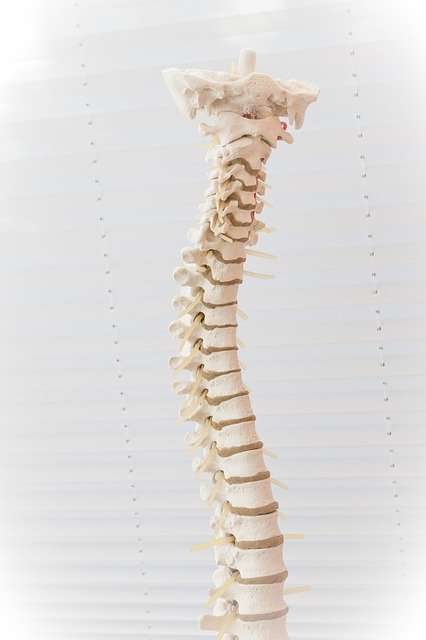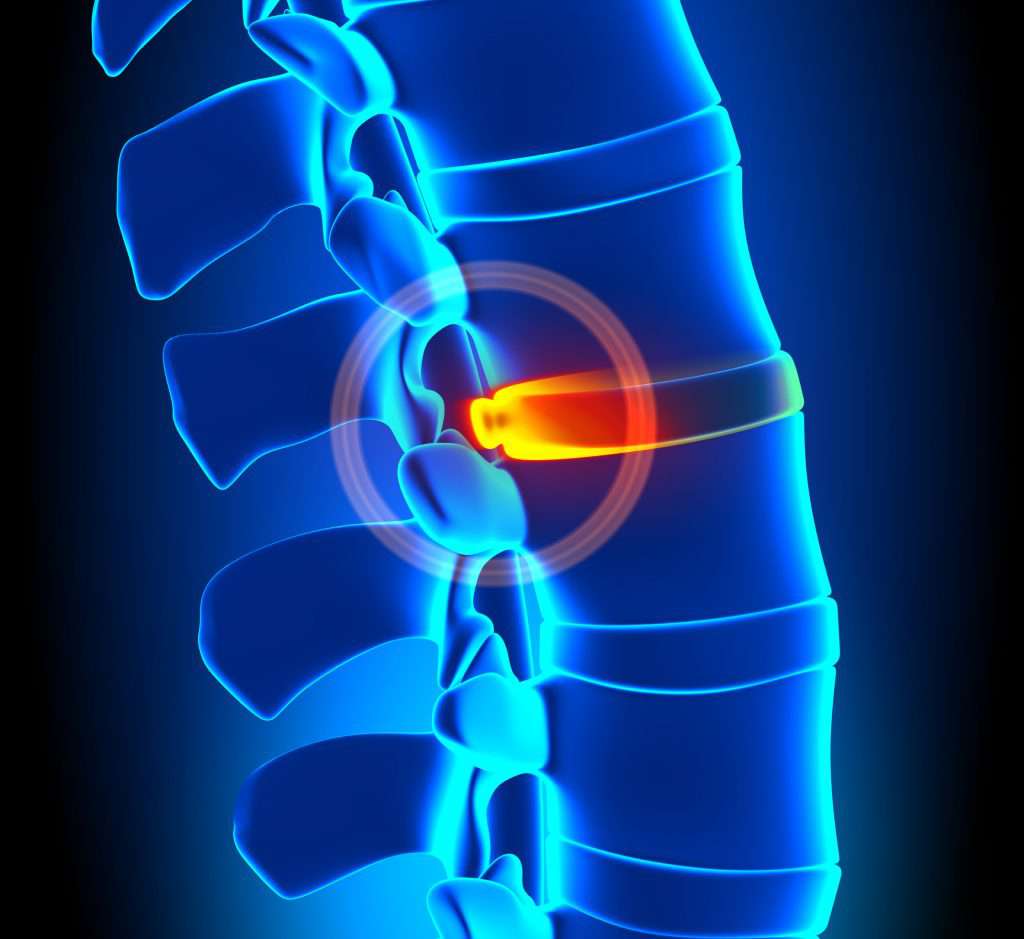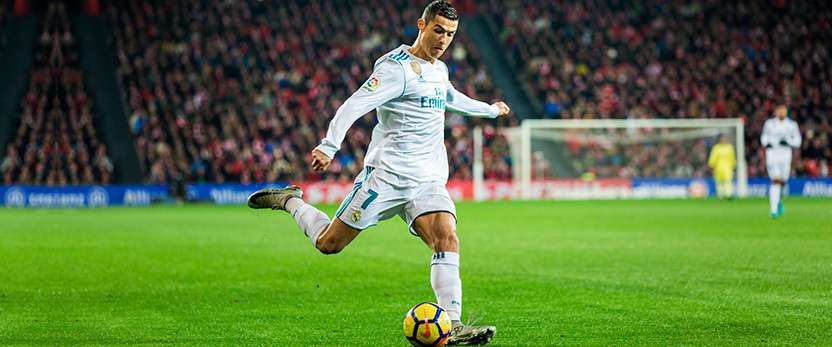Most people will experience back pain at some point throughout the course of their life. Back pain caused by a bulging is particularly excruciating and can affect your quality of life, sleep and mobility. Disc issues are very common, and there is no reason to panic if you have been diagnosed with a bulging disc.
This article will educate you on the anatomy of a disc, what is occurring when a disc is bulging, common symptoms that are often reported and different treatment methods.
Anatomy of a disc
The anatomy of a disc is important to know. A disc is the ‘cushion’ located in between each vertebral bone that makes up your spine. Most adult spines are comprised of 24 individual bones. Prior to adulthood, there were more spinal bones that have since fused into the sacral bone. These bones run from directly beneath your skull and are stacked on top of one another running the length of your back: ending in your tailbone. If you feel those bumps that run along the length of your back, those are part of the bones that make up the spine. These bones are called vertebrae.
In between each of these bones is an intervertebral disc. The discs are soft, pliable structures that act as shock absorbers for your spine. The discs also allow for a greater range of motion and flexibility than would be allowed in the spine if they were not present.
A healthy spine is a flexible spine. The picture below depicts what a healthy spine looks like.

What is a bulging disc?
Each individual disc consists of an inner layer of gelatinous liquid called the nucleus pulposus. This inner portion of the disc is surrounded by a firmer ring of collagen called the annulus fibrosus. In a healthy disc, the nucleus pulposus maintains its position within the inner portion of the disc.
The jelly-like nucleus pulposus in the middle of the disc moves around in response to the motion of the body. In a healthy spine, this fluid will settle right back into its proper position once the body returns to a neutral stance of the spine. A neutral position of the spine exists when it is relatively straight with its natural curve.
Sometimes, these discs become displaced or deformed when the gelatinous inner portion of the disc does not fully return to its proper positioning in the middle of the disc. As a result, the jelly-like inside of the disc pushes against the wall of the outer ring of the disc. This is a bulging disc and can lead to pain; when that inner fluid inside the disc is displaced, and pushes on the outer wall.
In more severe cases, the deformed disc may press on one of the nerves that originate in the spine. This may cause your pain to be more intense. When this occurs, pain or other sensations may be felt in places other than your back.
Every nerve in the body is connected. Pressing on a nerve in the back may cause pain or weakness in areas down the length of the leg (if the disc is pressing on a nerve that originates in the low back) or the arms (if a bulging disc is pressing on a nerve that originates in the neck). Here is an image of what a bulging disc may look like:

A bulging disc is different from a herniated disc. In a bulging disc, the outer ring of collagen is still intact, just deformed. A herniated disc occurs when the integrity of the outer ring of the disc has been compromised and may be ruptured or torn. This allows for that inner jelly-like substance of the disc to push through the outer wall and possibly cause extreme discomfort and other adverse symptoms.
What are the symptoms of a bulging disc?
There are many nerves that originate in the low back or lumbar spine. These nerves control movement and sensation not only in the back but in the legs and feet as well. Nerves coming from the neck region (the cervical spine) control sensations and movements in the arms and hands.
The symptoms that you may feel as a result of a bulging disc are varied and unique to you. Generally, the symptoms of a bulging disc will be more prominent on one side of the body. This is because when the ‘jelly‘ inside of the disc becomes displaced, it goes to either side of the bones of the spine.
Here are some symptoms that may indicate you have a bulging disc in your back:
Intermittent pain
Intermittent pain is when there are times throughout the day or certain positions when the pain goes away or the symptoms worsen. You will want to distinguish between constant vs. intermittent pain.
If the pain is constant, and you know of no position or time of day that it goes away, even for a short amount of time. This may be a sign that a bulging disc is not the cause of your pain.
Distal discomfort
You may also experience pain, tingling or other sensations in areas distal to your spine. Distal means ‘further away.’ Primarily the location of pain will be more on one side of your back, but not always. All nerves communicate with one another. So, when the root of a nerve is being pressed on in the low back, you may feel symptoms that radiate to your legs, feet or toes.
This radiating pain is called radiculopathy. With a bulging disc, the location that you may feel symptoms in your legs or feet correspond to a specific spinal segment and can help your doctor pinpoint where the problem is originating from in the spine.
An example of this is pain or tingling in your big toe. The nerves of the big toe correspond to the L4 spinal segment. ‘L’ refers to the lumbar spine (low back) and the ‘4′ denotes which level of the lumbar spine is the culprit. The symptoms described above may be present in the arms, hands and fingers with a bulging disc in the neck.
Unusual sensations
Other than pain, you may feel tingling, burning, or an area may be completely numb. You may also notice weakness in areas of the arms, legs, hands or feet.
Irregular bowel and bladder symptoms
Irregular bowel and bladder symptoms may be experienced. If this happens, and you find yourself losing control of your bowel and bladder functions – as in not being able to make it to the toilet in time. This is a medical emergency and you should see a doctor right away.
How is a bulging disc treated?
Many treatment options exist for bulging discs. The treatment recommendation will be decided based on your diagnosis, lifestyle, age and the severity of the injury.
Medication
Medications, specifically NSAIDs (non-steroidal anti-inflammatory drugs) are generally given as the first line of defense in treating spinal injury symptoms. However, these will only put a ‘band-aid’ on the pain and will not treat the source of the problem. They are a short-term solution.
Steroid injections are another option. These may help to make you feel better in the short term, but will not help with chronic back pain.
Physical therapy
A course of physical may be suggested for your bulging disc treatment. The physical therapist will take you through different movements, and determine which direction of movement, strength or range of motion could be improved upon.
Surgical intervention
In the most severe cases, surgery may be necessary. Surgical intervention is certainly not ideal, and we try to avoid it as much as possible. However, sometimes it is a necessary method to rid you of your spinal injury symptoms. There are different levels of surgery that may be recommended, ranging from minor to major. These may involve removing the offending disc completely, removing and replacing it or just “cleaning up” the frayed or torn section of the disc that is causing your pain.
Stem cell therapy
Stem cells have the ability to grow and develop into different types of cells and tissue where needed. After they’re obtained from various sources, the stem cells are injected back into the body at the source of your pain where they will reproduce and grow into healthy tissue where needed.
This is a revolutionary treatment method that is safe and uses the body’s natural healing mechanisms with long-term results. We have seen incredible healing transformations using this technique for bulging discs.
Stem cells can be used along with Platelet-rich plasma injections, and doing so may provide an extra boost of healing power.
Longterm care
After treatment on your bulging disc, it is critical to pay close attention to your posture and body mechanics, i.e. lifting items with your legs by bending the knees and keeping your back straight. Paying attention to your posture in your daily activities is the number one thing that you can do to prevent future back pain.
Is stem cell therapy right for you?
Your treatment plan is unique to you. There is no ‘one-size-fits-all’ treatment for back pain. It is individualized, specific, and something that you need to discuss with a healthcare professional.
We have seen incredible healing transformations here at BioXcellerator with stem cell therapy. You do not need to live your life in pain. Speak with a patient advocate to learn more about how stem cell therapy works and if it’s the right treatment option for you. Contact us (bioxcellerator.com)


